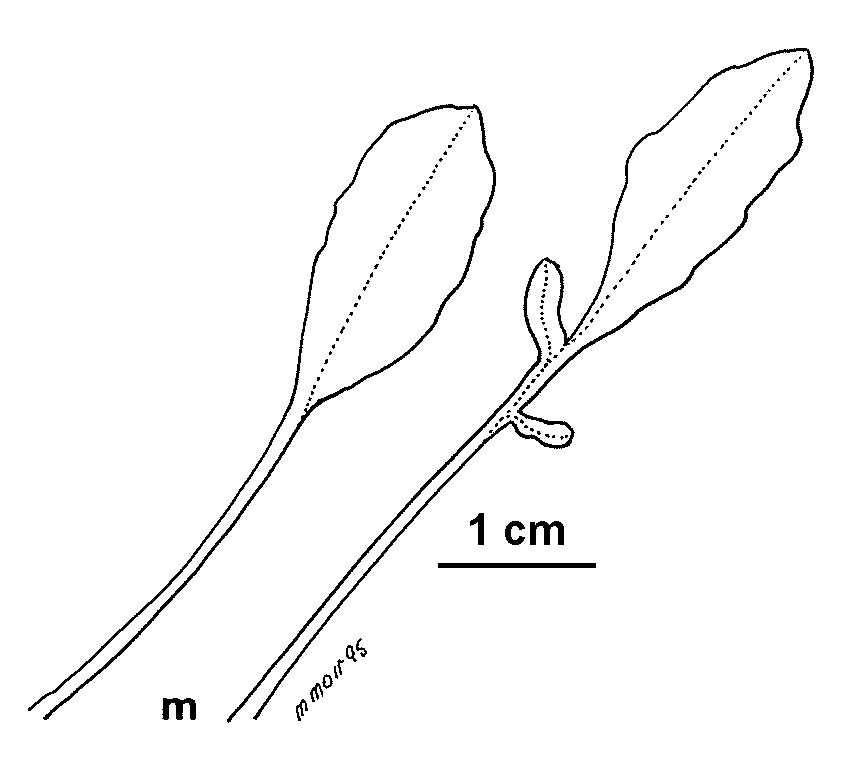Cardamine franklinensis
I.Thomps.Glabrous taprooted perennial, to 30 cm high; stems erect. Basal leaves forming a more or less dense rosette, to 15 cm long, entire, spathulate or pinnate, terminal pinna elliptic; lateral pinnae typically sessile (not formed into distinct petiolule and lamina), obovate with an attenuate base; cauline leaves 0–3, 1–3(–5) cm long, reducing in size up the stem, variously pinnately divided. Inflorescence commonly many-flowered; sepals 2–3 mm long; petals 4.5–7 mm long, white or pink; mature style 1–2 mm long. Fruits erect, 25–35 mm long, 1.5–1.8 mm wide; pedicels 10–15 mm long; seeds c. 1.5 mm long. Flowers spring.
HNF, VAlp. Also NSW, Tas. Known in Victoria by collections from 3 subalpine areas (Bogong High Plains, Mt Wellington and Wonnangatta-Macalister River divide).
Leaf morphology and generally smaller seeds readily distinguish this species from C. lilacina which is otherwise similar in habit. Cardamine franklinensis conforms with the spathulate-leaved variant of C. gunnii in Hewson (1982). It differs from C. gunnii s. str., however, by having different leaf morphology, smaller flowers (often pink), a different root system and a many-flowered inflorescence.
Thompson, I.R. (1996). Cardamine. In: Walsh, N.G.; Entwisle, T.J., Flora of Victoria Vol. 3, Dicotyledons Winteraceae to Myrtaceae, pp. 434–442. Inkata Press, Melbourne.
 Spinning
Spinning
